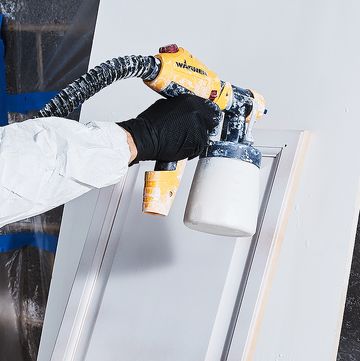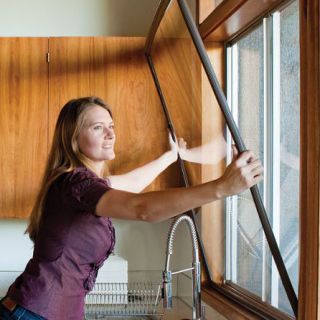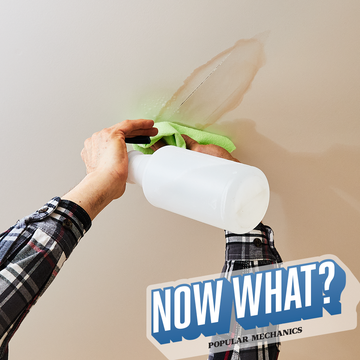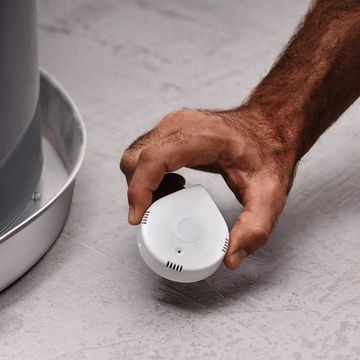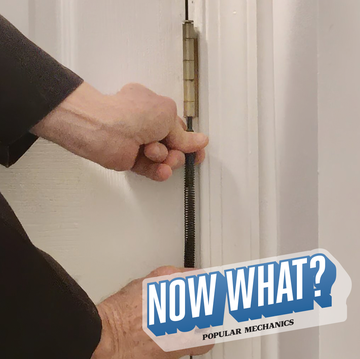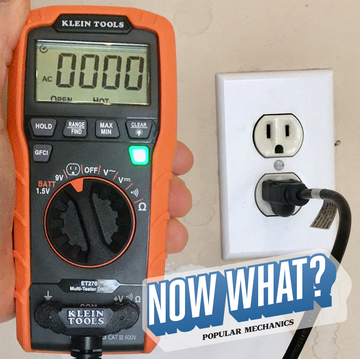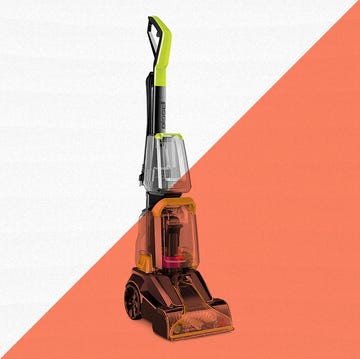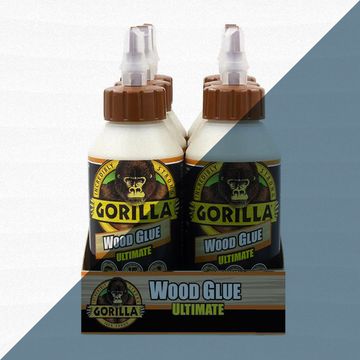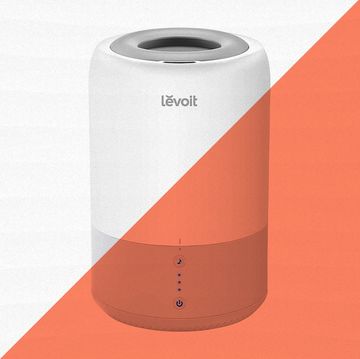6:135 || DISCONCERTING LEAK:
There's water pooling around your central air-conditioning unit (or perhaps dripping from the ceiling directly below the unit location).
THE QUICK FIX
According to Glenn C. Hourahan, vice president of research and technology for Air Conditioning Contractors of America, it's likely that the drain pan for the air-conditioning evaporator coil is overflowing due to a blockage in the drain line. "Depending on the type of unit you have, the evaporator may drain to the outside of the house or to a floor drain in the basement. Either way, use a long wire (an unwound coat hanger will work) to clear any blockages that may occur near the mouth of the drainpipe. If that doesn't correct the problem, cautiously (you don't want to introduce much additional water into an already flooded pan) use a hose to force a short blast of water up into the drainpipe and through the drain trap and drain pan. This may free accumulated dirt and allow the evaporator to drain freely for some time." If that doesn't do the trick, Hourahan recommends turning off the air conditioner to avoid further water overspill and calling a licensed HVAC contractor to have a NATE-certified service technician address the situation.
GO WITH THE PRO
Signs of Central Air-conditioning Crisis
Central air-conditioning systems are fairly complex but, fortunately, fairly reliable. Beyond the simple power outage or clogged condensate drain line, more serious problems are best left to experienced, licensed technicians. Signs that should lead you to call for service include:
+ Unit running but no cool air coming out. If the appliance cools intermittently, it usually points to a problem with the refrigerant and may mean the system needs to be recharged.
+ Odd sounds coming from the condenser/ compressor unit. Turn off the unit and call for service.
+ The system doesn't come on at all. First check the obvious culprits--that the thermostat is set to cool and that the appliance's circuit breaker is in the "On" position. Likewise, check all other system switches or disconnects. If these aren't the problem, make sure the air-conditioner is off and call for help.
+ Any significant leak or a dripping circuit breaker. This should be dealt with immediately by a professional. Turn off the unit and make the call.
6:136 || HEATLESS IN SEATTLE:
The mercury is plummeting and you're trying to find all those extra sweaters because your oil furnace isn't coming on.
THE QUICK FIX
Every oil-burner unit has a reset button that will trip from time to time. It's a red button on the box at the burner. Press it and the burner should fire right up, making your house a warm home again. However, do not try the reset button more than once.
GO WITH THE PRO
Oil-Burner Meltdown
Some conditions are signs of bigger problems than most people can handle at home and require the help of a heating pro. According to John Levey, owner of Oilheat Associates in Long Island, New York, and the director of education for the Oil Heat Institute of Long Island, these include:
+ Chimney smoke. Oil burners typically give off smoke from the chimney and/or soot in the boiler room when combustion problems arise. These early warning signs indicate the need for professional attention and are often caused by minor problems that can be repaired quickly and inexpensively. If they are not promptly repaired they can lead to more serious trouble and more expensive repairs.
+ Burner doesn't run. Oil burners require electricity to operate, so the first things to check are the large wall-mounted shutoff switch and the circuit breaker or fuse. If the switch and breaker are in the "On" position and the burner still doesn't fire, press the reset button on the primary control once. Never press the reset more than once because doing so can cause serious problems. If the burner starts and continues to run after the reset button is pushed it's important to understand that it went into reset for a reason. Chances are that there's a minor problem that requires professional attention.
+ The system doesn't come on at all. First check the obvious culprits--that the thermostat is set to cool and that the appliance's circuit breaker is in the "On" position. Likewise, check all other system switches or disconnects. If these aren't the problem, make sure the air-conditioner is off and call for help.
+ Cycling too frequently. Burners normally cycle on and off numerous times during the day, but if the unit is continually cycling it may be a sign that the controls are not properly adjusted or, on warm-air systems, that the filters have become clogged. Before calling a professional, check your air filters and, depending on the model, replace or clean them if they've become clogged.
+ Odors. Oil heat systems should not emit odors. An odor can be a sign of an oil leak or of a combustion problem, both of which should be checked by a professional.
+ Safety Reminder: Call in the spring or late winter to schedule an oil-heat tune-up in late summer or early fall. Also there should be working smoke and carbon-monoxide detectors located throughout the house.


